Competitive Concepts: Weather
Learn about the impact of weather conditions on competitive Pokémon.
In Pokémon, some moves and Abilities can cause effects that alter the battlefield in favour of their user. One variant of this is weather. Weather has existed since Generation II, with the introduction of the moves Sunny Day, Rain Dance and Sandstorm. It then rose to prominence in Generation III with the introduction of Abilities that either create or are activated by weather. Hail weather was also introduced this generation.Since then, weather has held a prominent place in many competitive metas, especially in the Generation V “Weather Wars”, where teams often used permanent weather Abilities to their advantage. Now, weather isn’t quite as popular as it was back then, as it is no longer permanent as of Generation VI. However, it still occupies a place of note in competitive Pokémon.
Each weather condition has different in-battle effects and is synergistic with different types and Abilities. However, all forms of weather share the common traits of having both a move and an Ability that can activate it and a duration on the field of five turns. Each type of weather also has a corresponding item that can extend its duration from five turns to eight.
Harsh Sunlight
Harsh Sunlight, typically just called Sun, can be triggered by Sunny Day, Max Flare or by the Ability, Drought. There is also a more powerful variant of this weather, Extremely Harsh Sunlight, which can only be caused by Primal Groudon’s Desolate Land Ability. However, Groudon is currently not available in Pokémon Sword and Shield (although it will be come the next DLC).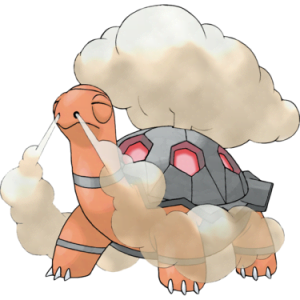
Harsh Sunlight primarily has synergy with the Fire and Grass types, although there are always outliers like Heliolisk. It is also somewhat hazardous to Water and, to a lesser degree, Ice types. Sun has the effect of increasing the power of Fire moves by 50%, while reducing the power of Water moves by the same amount. Additionally, Sun effects the potency of many moves in other ways. It removes the preparation turn for Solar Beam and Solar Blade, doubles the stat boosts caused by Growth, reduces the accuracy of Thunder and Hurricane and increases the healing power of moves such as Synthesis, Moonlight and Morning Sun. It also causes Weather Ball to become a Fire move and double its base power. As a bonus, Sun also makes it impossible to Freeze Pokémon, although it won’t thaw Pokémon that are already Frozen. Extremely Harsh Sunlight goes a step further, causing Water moves to fail completely and making it impossible to activate other weather outside of Heavy Rain and Strong Winds, which can only be caused by the Abilities of Primal Kyogre and Mega Rayquaza (which are also not available in Generation VIII at this time).
Historically, Sun and Rain have vied for the title of the most powerful weather over the generations. However, over time, it has become progressively less prevalent in comparison to some of its other counterparts. That is not to say it has disappeared from the game though. In Smogon’s Generation VIII OU tier, the preeminent Sun Setter, Torkoal sits at 58th in the usage rankings, despite technically being an RU Pokémon. The best Sun abuser, Venusaur, sits at 53rd.
Harsh Sunlight allows for some powerful combinations. In particular, it works very well with Chlorophyll sweepers such as the aforementioned Venusaur, as not only does it double their Speed but it allows for them to achieve enormous stat boosts through Growth and can provide them with powerful coverage against the problematic Steel type thanks to Weather Ball. Solar Power sweepers and wallbreakers can also be utilised, their Special Attack gaining a 1.5x boost at the expense of their HP. Sun teams unquestionably have a lot of offensive power.
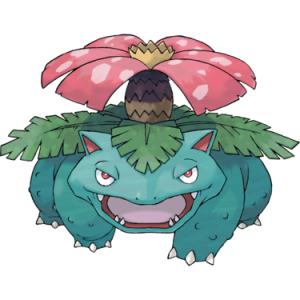 So, if Sun teams have so much power, why have they been falling from grace over the years? Simply put, the Pokémon that create and abuse Harsh Sunlight have their own problems outside of the weather and this has a negative impact on the effectiveness of Sun. Harsh Sunlight does provide any defensive boons outside of nerfing Water moves and preventing Freezing, an already rare occurrence. This is fine in theory, but unfortunately, Harsh Sunlight pairs primarily with Fire and Grass types, and neither of those types are great on the defensive thanks to a plethora of common weaknesses, especially for Fire types. Additionally, while Grass types often benefit from Sun, it also effectively removes the thin chance of most of them surviving a super-effective Fire move. This is all compounded by Sun setters like Torkoal and Ninetales lacking access to any sort of reliable recovery, putting Sun teams on a timer.
So, if Sun teams have so much power, why have they been falling from grace over the years? Simply put, the Pokémon that create and abuse Harsh Sunlight have their own problems outside of the weather and this has a negative impact on the effectiveness of Sun. Harsh Sunlight does provide any defensive boons outside of nerfing Water moves and preventing Freezing, an already rare occurrence. This is fine in theory, but unfortunately, Harsh Sunlight pairs primarily with Fire and Grass types, and neither of those types are great on the defensive thanks to a plethora of common weaknesses, especially for Fire types. Additionally, while Grass types often benefit from Sun, it also effectively removes the thin chance of most of them surviving a super-effective Fire move. This is all compounded by Sun setters like Torkoal and Ninetales lacking access to any sort of reliable recovery, putting Sun teams on a timer.
Overall, Sun teams are still viable in many competitive metas, but have become less and less common over the years on account of some easily exploitable weaknesses. That being said, underestimating a Sun Team could easily become your downfall.
Best Sun Setter: Torkoal
Best Sun Abuser: Venusaur
Rain
 Rain can be set by Rain Dance, Max Geyser or by the Ability, Drizzle. Like Sun, Rain also has an enhanced version called Heavy Rain that is only accessible via Primal Kyogre’s Primordial Sea (which is also currently not available). Rain primarily has synergy with Water types, although there is a small relationship to the Electric and Flying types and, as always, outliers such as Toxicroak and Goodra exist.
Rain can be set by Rain Dance, Max Geyser or by the Ability, Drizzle. Like Sun, Rain also has an enhanced version called Heavy Rain that is only accessible via Primal Kyogre’s Primordial Sea (which is also currently not available). Rain primarily has synergy with Water types, although there is a small relationship to the Electric and Flying types and, as always, outliers such as Toxicroak and Goodra exist.
Naturally, Rain increases the power of Water moves by 50% but reduces the power of Fire moves by 50% as well. It also has an impact on several moves. In Rain, Thunder and Hurricane bypass accuracy checks and always hit. Meanwhile, the power of Solar Beam and Solar Blade is halved as is the healing potential of Synthesis, Moonlight and Morning Sun. Rain also causes Weather Ball to become a Water move and doubles its power. In a similar vein to Extremely Harsh Sunlight, the enhanced Heavy Rain condition renders all Fire moves useless and makes it nearly impossible to change the weather to something else.
Given the smaller list of effects created by Rain, it may seem surprising it has proved such strong competition for Sun as each new generation has been released, with the most viable Rain setter, Pelipper sitting at 27th in OU usage. However, Rain is regarded by many as the best of the weather conditions for good reason.
First and foremost, while there is currently only a single usable setter of Rain, there are many more viable abusers of Rain than Sun. Several dangerous Swift Swim users such as Barraskewda, Ludicolo and Kingdra are usable in higher tiers of competitive play. Thanks to its impact on Thunder and Hurricane, Rain also affords greater offensive power to many Electric and Flying Pokémon – including Pelipper, who also benefits from a boosted Hydro Pump and Scald. Rain also played a part in making Dracovish so ludicrously powerful before its recent ban. There is also simply a greater number of viable Water types than Fire or Grass types who appreciate the power boost from Rain. Furthermore, the Water types who benefit from Rain have a type advantage over most of the other weather-related types.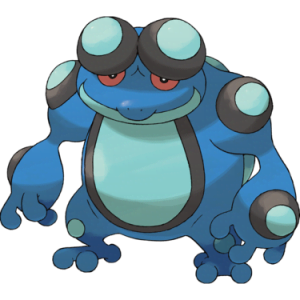
Rain also has more going for it defensively than Sun. Not only does it not run the risk of getting its own abusers killed, Rain can benefit Grass and Steel types that would otherwise have to fear powerful Fire moves. There is also a respectable number of Pokémon such as Toxicroak, Heliolisk, Goodra and Blastoise who can recover HP or remove status ailments passively when in the Rain. Rain also has the advantage of its setter, Pelipper, having access to reliable recovery in Roost.
On paper, Rain has historically been the best of the weather conditions and even in Generation VIII it puts up a fight for that title. However, with the recent banning of its best abuser and strong competition from other weather conditions, it would not necessarily be surprising to see it fall in favour as the meta continues to grow and change. That being said, a solid Rain team will likely always be a formidable threat.
Best Setter: Pelipper
Best Abuser: Dracovish Kingdra
Sandstorm
Sandstorm, sometimes just called Sand, can be caused by the moves Sandstorm and Max Rockfall or by the Sand Stream and Sand Spit Abilities. By design, it has synergy with Rock, Ground and Steel types, although a handful of other Pokémon also have Abilities that are triggered by the condition.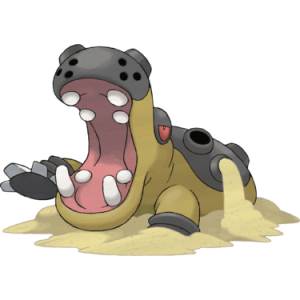
Sandstorm is one of two weather conditions that deal passive damage each turn, inflicting 1/16th a Pokémon’s maximum HP at the end of each turn unless that Pokémon is a Rock, Ground or Steel type or is otherwise protected. It also has the unique effect of providing Rock types with a 50% boost to their Special Defence stat. In Sandstorm weather, Weather Ball becomes a Rock type move and doubles in power while Solar Beam and Solar Blade have their power halved. Additionally, the healing power of Synthesis, Morning Sun and Moonlight drops under the influence of Sand while the healing of Shore Up increases to 2/3 the Pokémon’s max HP.
While, historically, Rain has been the best of the weather conditions, there is a very strong argument to say that, in Generation VIII, Sand has taken that throne. Currently, Hippowdon – the most prominent Sandstorm setter – sits at 17th on Smogon’s usage stats. Meanwhile, Tyranitar, the other main Sand setter, is ranked 59th. Excadrill, the best Sandstorm abuser, and several other Pokémon who all benefit, or are immune to damage, from Sandstorm also place highly in current usage statistics.
So, what makes Sandstorm so good? A combination of factors. Firstly, the passive damage granted by Sandstorm can counteract passive healing from Leftovers or Black Sludge and help in securing a KO. However, this is probably one of the least important factors in Sandstorm’s success. Having such a strong relationship with three Pokémon types allows for ease in constructing a well built team. In particular, the Special Defence boost afforded to Rock types is extremely important. This is because Rock types, although tending towards high physical defence, typically have below-average Special Defence. In Sandstorm, they gain a formidable mixed bulk that can make them much harder to take out. This is especially true of Pokémon such as Tyranitar or Terrakion, those rare Rock types that already have a decent Special Defence stat.
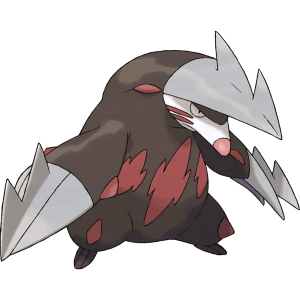 The final factor in Sandstorm’s success is simply that better Pokémon do well in it. Even before looking at individual Pokémon, Rock and Ground are excellent offensive types while Steel is arguably the best defensive type in the game. Then on top of that, the Sandstorm setters are quite probably the best weather setters in the game. Tyranitar has all around amazing stats and gains a defensive buff from its own Sand while Hippowdon is very bulky with access to Recover. Furthermore, many of the most prominent Pokémon right now such as Terrakion, Corviknight, Ferrothorn, Gastrodon and, especially, Excadrill also do very well in a Sandstorm.
The final factor in Sandstorm’s success is simply that better Pokémon do well in it. Even before looking at individual Pokémon, Rock and Ground are excellent offensive types while Steel is arguably the best defensive type in the game. Then on top of that, the Sandstorm setters are quite probably the best weather setters in the game. Tyranitar has all around amazing stats and gains a defensive buff from its own Sand while Hippowdon is very bulky with access to Recover. Furthermore, many of the most prominent Pokémon right now such as Terrakion, Corviknight, Ferrothorn, Gastrodon and, especially, Excadrill also do very well in a Sandstorm.
This isn’t to say that Sandstorm teams are flawless though. Sandstorm teams tend to have rather poor matchups against other types of weather because the core types for a Sandstorm team – Rock, Ground and Steel – tend to be weak against types common to opposing weather. The Water types on Rain teams are strong against Rock and Ground, Sun teams have the advantage against Rock and Ground with Grass and Steel with Fire and even Hail teams can be somewhat threatening thanks to Ice’s advantage against Ground. Even opposing Sand teams can be problematic since Ground has a type advantage against both Rock and Steel. Furthermore, most of those types are quite prominent in most competitive metas even outside of weather. Overall though, there’s very few downsides to attempting a Sandstorm team as long as you make good decisions during the teambuilding phase and can keep your Sandstorm up.
Best Setter: Hippowdon
Best Abuser: Excadrill
Hail
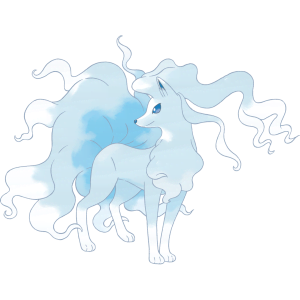 The last weather condition with an effect on gameplay is Hail. It can be set by the moves Hail, Max Hailstorm or by the Ability, Snow Warning. Unsurprisingly, Hail is synergistic with the Ice type.
The last weather condition with an effect on gameplay is Hail. It can be set by the moves Hail, Max Hailstorm or by the Ability, Snow Warning. Unsurprisingly, Hail is synergistic with the Ice type.
Much like Sandstorm, Hail deals passive damage of 1/16th a Pokémon’s health each turn unless that Pokémon is of a specific type. In this case, only Ice types do not receive damage from Hail unless they are otherwise protected. Hail also causes Weather Ball to become an Ice move, halves the power of Solar Beam and Solar Blade, reduces the effectiveness of various recovery moves and allows Blizzard to bypass Accuracy checks.
At this point, you are likely noticing that while Hail does possess many of the standard weather effects, it also noticeably lacking. Specifically, Hail does not provide a power boost to moves of a certain type like Rain and Sun do, nor does it provide a defensive buff like Sandstorm. Additionally, Hail only really has synergy with the Ice type as they are the only type naturally immune to its passive damage and, outside of Castform’s Forecast (which simply turns it into an Ice type), only Ice types possess Abilities (Slush Rush, Ice Body, Snow Cloak) that are triggered by Hail.
This is unfortunate for Hail as a playstyle option, as Ice is unquestionably the weakest defensive type in the game with only a single resistance – to itself. This means that a dedicated Hail team is not really usable in the same way as a Rain, Sun or Sand team. However, Hail does have a saving grace: Aurora Veil. This move can only be activated while Hail is active and simultaneously provides the effects of both Light Screen and Reflect, granting your team enormous defensive bonuses. Rather fortuitously, Alolan Ninetales exists and both has access to Aurora Veil and the Ability, Snow Warning. This allows Ninetales to immediately set up Aurora Veil and provide your team of Pokémon not reliant on Hail greater longevity even with the passive damage they take from the weather. Frail, hyper-offensive teams particularly enjoy this.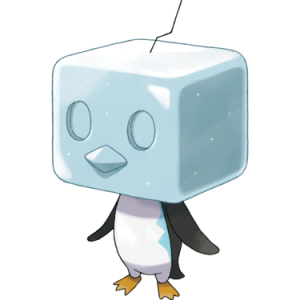
Ultimately, Hail is by far the weakest and least consistent of the weather options available as a dedicated playstyle. It is hampered dramatically by the absence of buffing effects, the lack of synergy it has with types outside of Ice and the Ice type’s own inherent weaknesses. Unfortunately, it is unlikely dedicated Hail teams will become even remotely viable in the near future unless either the weather, the Ice type or both are fundamentally changed. Thankfully however, Hail isn’t completely useless, as Aurora Veil can provide some excellent support to a team that is not centred around the weather condition it’s dependent on.
Best Setter: Alolan Ninetales
Best Abuser: Alolan Ninetales
Counterplay
Unfortunately, there’s not a huge amount you can do to outright counter weather, but there are a few options available. The easiest of these is to simply replace the current weather with a different variety. Only a single type of weather can be active at a time, so if your opponent’s choice of climate doesn’t suit your team, you can simply switch in a Pokémon with an Ability that triggers different weather or use a move that changes it.
Another method of counterplay is to make use of Pokémon Abilities to ignore or neutralise the weather. Pokémon with Cloud Nine or Air Lock completely negate the effects of weather while on the field. Similarly, you can also make use of Pokémon with Magic Guard or Overcoat to bypass the damaging effects of Sandstorm and Hail. Depending on your team construction, you may also be able to turn the weather against your opponent by using your own Pokémon with Abilities or typings that are benefited by the opposing weather choice. Sadly, these strategies are much less reliable than doing something to remove the current weather condition as they are depend on you having a team construction appropriate for doing so. That might not seem like a big deal, but it is not advisable to build a team around countering one specific playstyle. Although, including Pokémon on your weather teams that are not dependent on your weather, or that can function in an opposing condition, is always a solid idea.
Really, the only absolute, surefire way to counter weather is to take out your opponent’s weather setter as quickly as possible. Otherwise, they will likely just continue to reset the weather to their preferred selection any chance they get.
Conclusion
Weather has been a part of the game ever since the second generation, and a particularly prevalent part of it since the third. It has the power to drastically swing the balance of power in the favour of a single player, but that isn’t to say that it doesn’t have its flaws. Ultimately, it’s up to the player to decide if they want to build a weather-focused team, but as this article illustrates, doing so can carry numerous benefits.
Edited by Aldo, bobandbill, Corviknight, Mercury and Ranko.
